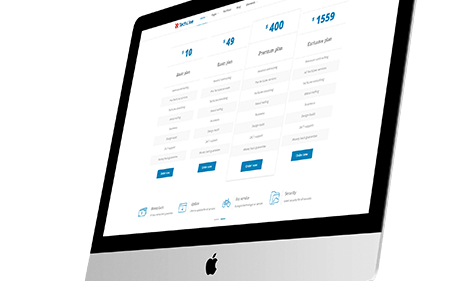Paid marketing, also known as paid advertising, is a strategy where businesses pay to promote their products, services, or brand across various platforms to reach a targeted audience. This method ensures immediate visibility, faster results, and enhanced reach compared to organic marketing tactics. Key forms of paid marketing include:
Pay-Per-Click (PPC) Advertising: In PPC campaigns, advertisers pay each time a user clicks on an ad. Common platforms for PPC include Google Ads, Bing Ads, and social media platforms. This strategy is highly measurable, cost-effective, and offers direct targeting options.
Social Media Advertising: Platforms like Facebook, Instagram, LinkedIn, Twitter, and TikTok allow businesses to run paid ads targeted by demographics, interests, behaviors, and even location. Social media ads can appear in users' feeds, stories, or as sponsored content.
Display Ads: These are banner, video, or interactive ads that appear on websites, apps, and social platforms. Display ads help with brand awareness and can be retargeted to visitors who have previously interacted with your website or products.
Search Engine Marketing (SEM): SEM involves using paid ads on search engines like Google to appear in search results based on specific keywords. Google Ads is the most popular SEM platform, enabling advertisers to bid on keywords relevant to their products or services.
Affiliate Marketing: In affiliate marketing, businesses partner with influencers, bloggers, or other content creators who promote their products in exchange for a commission based on sales or leads generated through their links. This type of marketing allows businesses to leverage the reach of trusted figures.
Native Advertising: Native ads blend seamlessly into the content of the website or platform they appear on, making them look like natural content rather than a traditional ad. These ads are often less intrusive and provide a more organic user experience.
Video Ads: Platforms like YouTube and social media offer paid video advertising opportunities, allowing businesses to engage customers with visual storytelling. These can range from skippable ads to non-skippable, in-stream video ads.
Retargeting (Remarketing): This strategy targets users who have previously visited your website or interacted with your brand but didn't complete a desired action (like making a purchase). Retargeting ads remind users of your products and encourage them to return and convert.
Influencer Marketing: Partnering with influencers who have a large and engaged following on platforms like Instagram, YouTube, or TikTok to promote your product or service. Influencer marketing can take the form of sponsored posts, product placements, and brand collaborations.
Programmatic Advertising: This is the automated buying and selling of digital ads using AI and real-time bidding. It allows advertisers to target the right audience at scale and optimize campaigns based on performance data.
Benefits of Paid Marketing:
Targeted Reach: Paid marketing allows businesses to target specific demographics, interests, behaviors, and even geographic locations, ensuring that the message reaches the right audience.
Measurable Results: Paid marketing provides robust analytics and performance data, allowing advertisers to track ROI and adjust campaigns for optimal performance.
Speed & Scalability: Paid campaigns generate instant visibility, which can lead to immediate traffic, leads, and sales. They can also be scaled quickly based on results.
Brand Awareness: Paid ads help increase brand visibility and recognition, especially when combined with high-frequency placements across various platforms.





